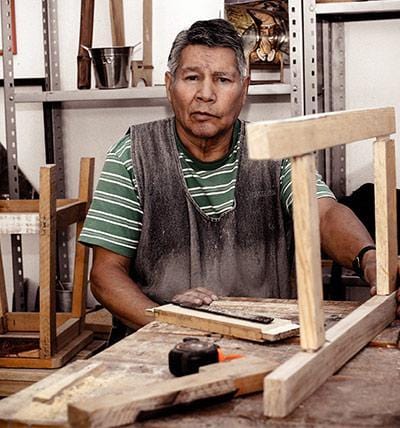Reclaimed wood brings a feeling of beauty and history to every project it is used in or just as a house furnishing. You should know the truth behind numerous common myths regarding salvaged wood, though. A few examples:
Long-Needled Pine
Longleaf pine was crucial to the United States' economic growth throughout the Industrial Revolution. Numerous buildings and other constructions made advantage of the trees. Warehouses, industries, and even private residences all made use of them.
The heartwood of the tree was exceptionally sturdy and robust. Longleaf pines, on average, reached a height of 125 feet throughout their growing period. More over a hundred thousand square miles of land were covered by these woods, stretching from southwest Virginia to central Florida.
Timber was utilized to construct massive mill structures. Wood was also utilized to create most government structures during the beginning of the Industrial Revolution. Flooring, siding, and joists were all other common uses.
Tar, pitch, and turpentine were all products of the resin. Paints, shoe polish, and weatherproofing goods were also produced using it. It was also used to construct wooden ships that were sent to Europe for trade.
Oak
If you're in the market for new flooring or furnishings, salvaged oak wood is worth serious consideration. It is long-lasting and has a special appearance and history.
Lumber that has been salvaged from structures at least a century old is known as reclaimed lumber or old growth. In order to protect the hardwood, these constructions are dismantled very gently. The final product is sturdy and will survive for years or maybe decades.
The natural grain pattern of reclaimed wood is something you won't find in new wood. It's also more durable than wood from recently planted trees. No two pieces are the same hue, and there are no duplicates.
'Old growth' forests are those that have trees of a certain age that have lived to their full potential. They tend to be bigger and more sturdy than average trees. They may be less prone to breakdown and deterioration as well.
Walnut
You can never go wrong with reclaimed Walnut wood, whether you're building your ideal house or adding a one-of-a-kind piece of furniture to your existing home. This wood has a special appearance and a fascinating history.
Walnut is a strong and long-lasting hardwood. Stains and adhesives adhere easily to it. It also works well with steam bending. On the downside, it is more costly than other hardwoods.
There is a wide variety of walnuts to choose from. The Eastern Black Walnut, or American Black Walnut, is a tree that is indigenous to the Midwest. Its maximum height is 100 feet. Furniture, flooring, and cabinets may all be crafted from this species.
Black walnut is a popular choice among homes in North America due to its durability. The stunning form and deep brown coloration for which it is recognized.
Termites Favor Weathered Wood
Termites favor weathered timber. Both subterranean and drywood termites can be found in the United States. distinct termite species have distinct timber preferences. Termites are notoriously difficult to eradicate without the aid of a trained specialist.
The most damaging insects are subterranean termites. From their subterranean lair, tunnels run to the surface, where they may find food. The grain of the wood may show signs of these tunnels. They often have a light feces lining. In effect, this serves as a plaster.
Swarming activity in drywood termites is less reliant on moisture levels. Southern coastal states are a prime habitat for them. These termites set up shop within a wooden structure. The newborn King and Queen are cared for and fed for a whole year. Then they enlist in the military.
The Need for New Trees Is Diminished
Reusing wood is a fantastic technique to help preserve our wooded areas. In addition, it lessens the call for newly cut trees.
One of those benefits is that reclaimed wood lasts longer than freshly cut wood. It also uses a lot less electricity. The energy needed to process recycled wood is only around 11-13 times that of freshly cut wood.
Used wood may be put to many different use. It has several potential secondary uses, including those of flooring, barn siding, and furniture. These items have the potential to lessen the world's reliance on fossil fuels while simultaneously providing the aesthetic benefits of reclaimed wood.
The tale of reclaimed wood is fascinating. It has been subjected to severe weather and climatic shifts. Any structure may benefit from the use of reclaimed wood. Furthermore, it is a renewable resource that reduces pollution caused by the harvesting of trees.





